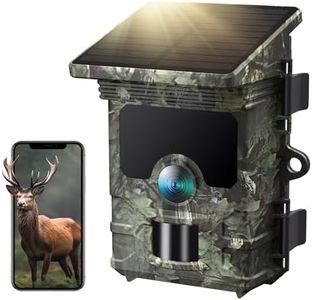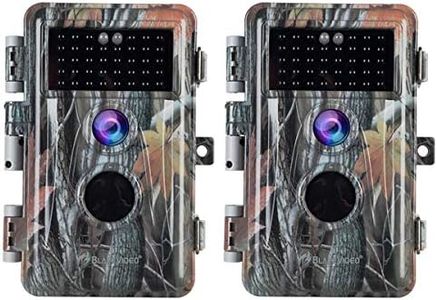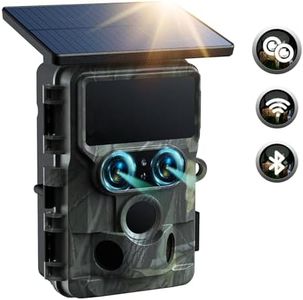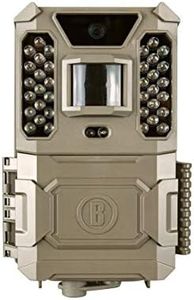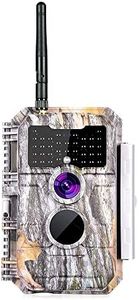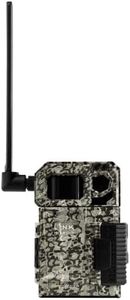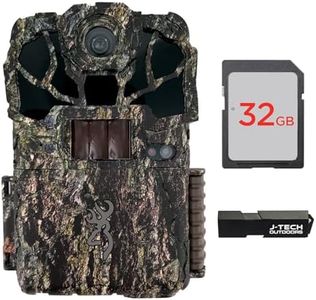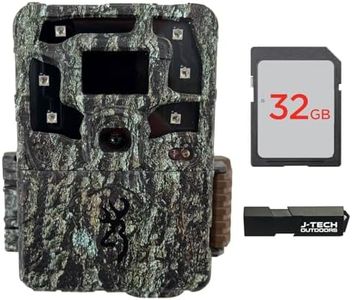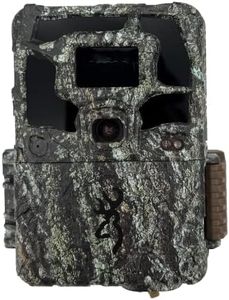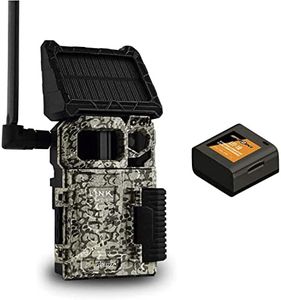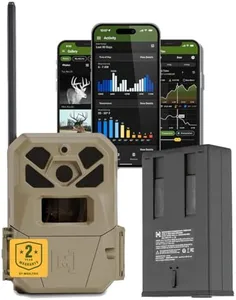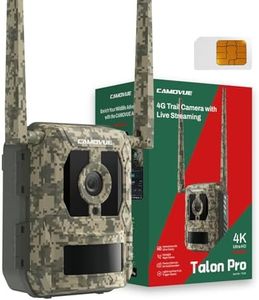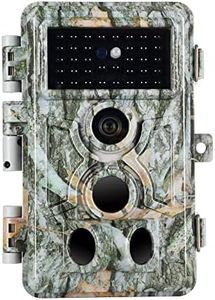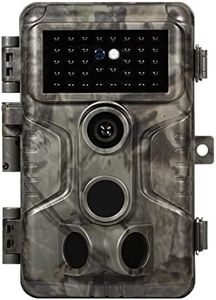We Use CookiesWe use cookies to enhance the security, performance,
functionality and for analytical and promotional activities. By continuing to browse this site you
are agreeing to our privacy policy
10 Best Trail Cams
From leading brands and best sellers available on the web.By clicking on a link to a third party's website, log data is shared with that third party.
Buying Guide for the Best Trail Cams
When choosing a trail camera, it's important to match the camera's features to your specific needs, whether that's for wildlife monitoring, hunting, or property security. Think about where you'll set it up, the kind of images you want to capture, and how often you'll be able to check on the camera or swap out its batteries. Focusing on a few main features will help ensure you get a camera that performs well in your environment and suits how you plan to use it.Image and Video ResolutionResolution refers to the clarity of photos and videos captured by the trail camera, usually measured in megapixels for photos and in 720p, 1080p, or even higher for videos. Higher resolution means more detailed images, which can be important for identifying animals or people. If you just want to monitor animal movement, standard resolutions are often enough, but if you're interested in high-quality photos for documentation or sharing, choose a camera toward the higher end of resolution values.
Detection RangeDetection range is the maximum distance at which a camera can sense motion and trigger to take a photo or video. This range is usually measured in feet or meters. Short-range cameras (under 50 feet) are suitable for close-up setups or smaller areas, while longer detection ranges (60 feet and above) are better for open spaces or monitoring larger fields. Think about how far you expect your subjects to be from the camera and choose accordingly.
Trigger SpeedTrigger speed is how quickly the camera reacts when it detects motion. It's measured in seconds or fractions of a second. Faster trigger speeds (under 0.5 seconds) are good for capturing fast-moving animals or fleeting moments, while slower speeds might be enough if your subjects move slowly or linger. If your main goal is to catch quick movements, prioritize a camera with a fast trigger.
Flash TypeTrail cameras use different types of flashes—white (visible), infrared (low-glow or no-glow), or black infrared (completely invisible)—to illuminate scenes at night. White flash gives full-color images at night but can startle animals, while low-glow and no-glow options are less visible and better for undisturbed wildlife monitoring or security. Choose based on whether you need color night images or want to stay as discreet as possible.
Battery Life and Power OptionsBattery life is how long the camera can operate before needing new batteries or a recharge. Some cameras also offer external power options like solar panels. Longer battery life is important if you can't visit the camera regularly, especially for remote or hard-to-access areas. If you'll be checking the camera often or it's close to a power source, battery life may be a lesser concern.
Storage and MemoryTrail cameras usually save pictures and videos on memory cards (most often SD cards). Some accept larger capacity cards, which let you store more footage without having to swap cards frequently. If your camera will be recording a lot or left unattended for weeks, higher storage capacity is useful. Make sure the camera supports the card size you plan to use, and consider how often you’ll be collecting the images.
Weather ResistanceSince trail cameras are used outdoors, weather resistance—or how well the camera can withstand rain, dust, and extreme temperatures—is important. Most cameras will say if they’re weatherproof or waterproof. If you live in a harsh climate or plan to use the camera for multiple seasons, pick one that offers a high level of protection for reliability and longevity.
